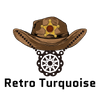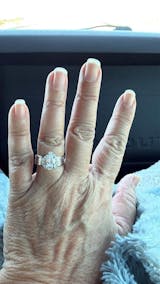I am satisfied with it.
📏 Size Guide
Find the perfect fit for your Retro Turquoise jewelry.
🔹 How to Measure Your Ring Size
Method 1: Measure an Existing Ring
Step 1: Select a ring that fits the intended finger well.
Step 2: Measure the internal diameter across the center of the ring (in millimeters).
Step 3: Use the conversion chart below to find your size.
🖼️ [Suggested Illustration: A ring laid flat, ruler measuring across the center]
Method 2: Measure Your Finger Directly
Step 1: Cut a thin strip of paper or use a piece of string.
Step 2: Wrap it around the base of your finger.
Step 3: Mark where the ends meet.
Step 4: Measure the length (circumference) with a ruler in millimeters.
🖼️ [Suggested Illustration: A hand wrapping a paper strip around a finger, marking the overlap]

Tip: Measure your finger at the end of the day when it’s warm for the most accurate result.
✨ Frequently Asked Questions
What if I'm between sizes?
➔ We recommend choosing the larger size for comfort, especially for vintage designs.Can my vintage ring be resized?
➔ Many Western-style rings can be resized slightly by a professional jeweler. However, intricate stone settings (like turquoise) may limit adjustability.Still Unsure?
➔ Contact us and our jewelry experts will guide you to the perfect fit.


